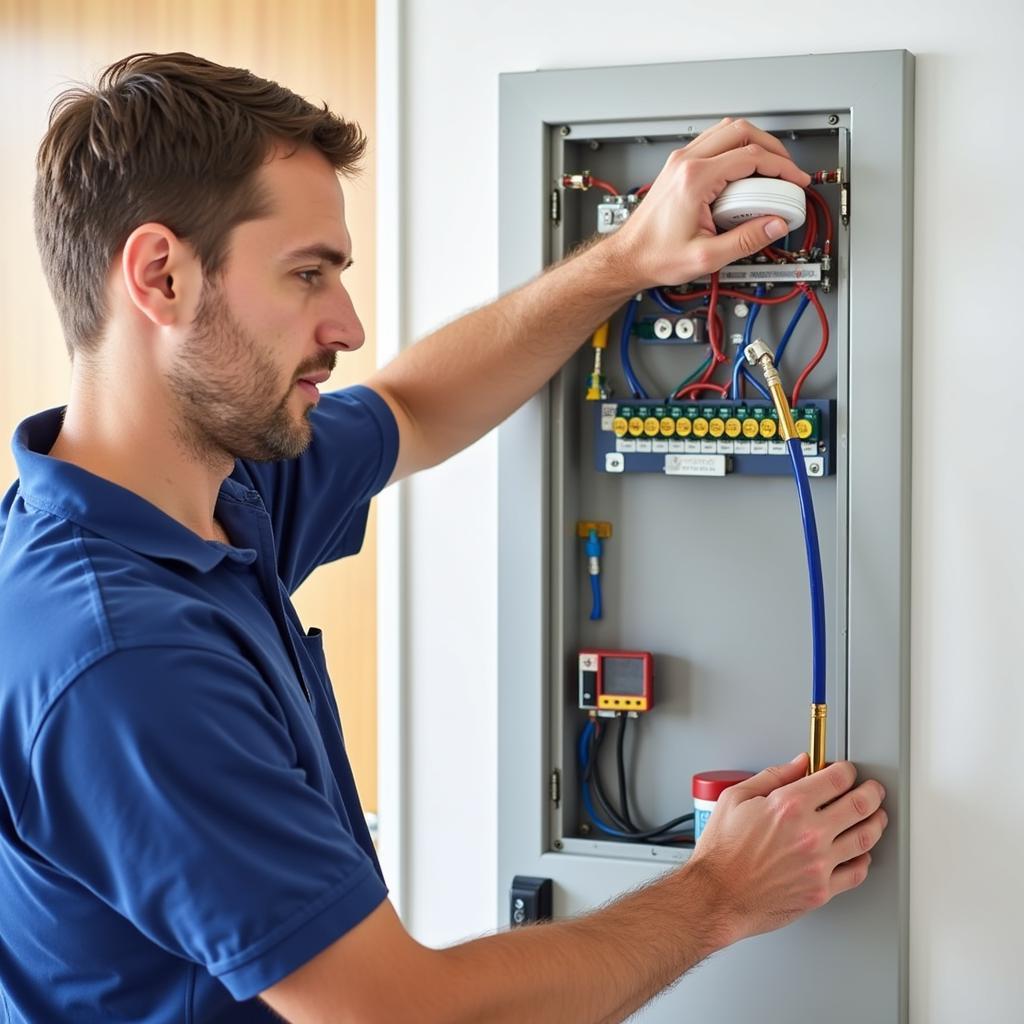Hospital Fire Alarms are critical life-saving systems designed to alert occupants and staff to the presence of fire or smoke, enabling rapid evacuation and minimizing potential casualties. These systems play a vital role in maintaining a safe environment within healthcare facilities, where vulnerable patients and complex medical equipment require extra precautions. A comprehensive understanding of these systems, from their components to regular testing procedures, is paramount for ensuring the highest safety standards. Learn more about how continuous fire alarm hospital systems work and the importance of regular maintenance.
Understanding Hospital Fire Alarm Systems
Hospital fire alarm systems are more than just simple smoke detectors. They are complex networks integrating various components to provide comprehensive fire protection. These sophisticated systems are designed with specific features to address the unique challenges of a healthcare environment. For instance, they often incorporate phased evacuation plans, allowing for the safe and orderly movement of patients depending on the location and severity of the fire. This contrasts with a general fire alarm that would simply trigger a complete building evacuation.
A crucial element of any hospital fire alarm system is its ability to integrate with other building systems. This interconnectivity allows for automated responses, such as shutting down ventilation systems to prevent smoke spread or unlocking fire exits for quicker egress. Additionally, hospital fire alarms are often directly linked to the local fire department, ensuring a swift and coordinated response in the event of an emergency.
 Hospital Fire Alarm System Components: Control Panel, Detectors, Alarms, and Notification Devices
Hospital Fire Alarm System Components: Control Panel, Detectors, Alarms, and Notification Devices
Components of a Hospital Fire Alarm System
Hospital fire alarm systems are comprised of several key components working in unison. Smoke detectors, strategically placed throughout the building, are the first line of defense, sensing smoke particles and triggering the alarm. Heat detectors, often used in areas where smoke detectors might be unsuitable, react to significant temperature increases. Audible and visual alarms provide clear and immediate warnings to occupants, while pull stations offer a manual way to activate the system. Understanding what is code crimson in a hospital can also be crucial for staff and visitors.
Beyond these core components, modern hospital fire alarm systems often incorporate advanced technologies. Addressable fire alarm systems pinpoint the exact location of the fire, allowing for a more targeted response and quicker containment. Integrated voice communication systems enable clear instructions and guidance to be broadcast throughout the building during an evacuation.
Understanding the function of each component and their interconnectedness is critical for ensuring the effectiveness of the entire system. Regular inspection and maintenance are essential to verify all components are functioning correctly and to address any potential issues promptly. For instance, a continuous fire alarm hospital scenario could indicate a malfunctioning system and requires immediate attention. You can learn more about medical gas pipeline system in hospitals, another critical safety aspect in healthcare facilities.
Regular Testing and Maintenance
Regular testing and maintenance are paramount for ensuring the reliability of a hospital fire alarm system. These systems should be tested regularly, following NFPA guidelines and local regulations. Testing involves activating various components, including detectors, alarms, and notification systems, to confirm their proper functioning. Maintenance procedures encompass inspecting wiring, cleaning detectors, and replacing any faulty components. These preventative measures ensure the system remains operational and effective in an emergency.
 Fire Alarm Technician Performing Maintenance: Ensuring System Reliability
Fire Alarm Technician Performing Maintenance: Ensuring System Reliability
It’s also important to have trained personnel on-site who understand the system and can respond effectively to alarms. This includes knowing evacuation procedures and how to operate the system’s controls. You may also want to explore topics like lockdown at mercy hospital and hospital security guard to understand the broader security measures in place.
Conclusion
Hospital fire alarms are indispensable for ensuring the safety of patients, staff, and visitors. Understanding the complexity of these systems, from their components to the importance of regular testing and maintenance, is vital for mitigating the risks associated with fire emergencies. By prioritizing fire safety and investing in robust and well-maintained systems, hospitals can create a secure environment that protects lives and safeguards valuable resources. Remember, a well-functioning hospital fire alarm system is not just a regulatory requirement, but a critical investment in the well-being of everyone within the facility.
FAQs
- How often should hospital fire alarm systems be tested? Hospital fire alarm systems should be tested regularly, typically annually, and according to NFPA guidelines and local regulations.
- What are the different types of detectors used in hospital fire alarm systems? Common detector types include smoke detectors (ionization and photoelectric), heat detectors, and flame detectors.
- Who is responsible for maintaining hospital fire alarm systems? Trained and certified fire alarm technicians are responsible for the inspection and maintenance of these systems.
- What should I do if I hear a fire alarm in a hospital? Follow the hospital’s evacuation procedures, remain calm, and seek assistance from staff if needed.
- What are the benefits of an addressable fire alarm system? Addressable systems pinpoint the exact location of the alarm, allowing for a faster and more targeted response.
Need assistance with your fire safety needs? Contact us at Phone Number: 02437655121, Email: [email protected] Or visit us at: Số 298 Đ. Cầu Diễn, Minh Khai, Bắc Từ Liêm, Hà Nội, Việt Nam. We have a 24/7 customer service team.